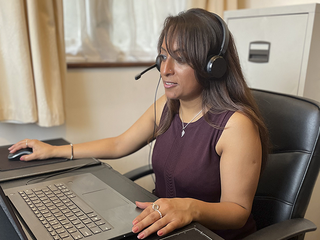What is Waldenström macroglobulinaemia (WM)?
Waldenström macroglobulinaemia (WM) treatment
The type of treatment you’ll need will depend on how far the Waldenström macroglobulinaemia (WM) has developed.
Approaches to treatment
If you don’t have many symptoms when you’re diagnosed, and the WM isn’t affecting your general health or wellbeing, you may not need treatment straight away. Instead, you’ll be put on ‘watch and wait’ and have regular check-ups every three to six months.
We have more information about living on watch and wait.
If there’s a large amount of IgM in your blood and it becomes too thick, plasma exchange treatment (also called plasmapheresis) can be used to help thin your blood to help it flow better through your blood vessels.
This treatment takes a few hours each time and uses a machine called a cell separator to remove the IgM from your blood.
If you do need treatment, chemotherapy is the main treatment type for WM. Chemotherapy uses anti-cancer drugs to kill cancer cells or stop them growing.
There are many different drugs used in chemotherapy. The drugs you get will depend on how well your body can cope with the treatment and how fast the cancer is growing. You may be given any of the drugs listed below. They may be given in combination (more than one given at once).
- Rituximab is used in most drug combinations for WM. This drug targets your B cells and helps your immune system to destroy the LPL cells. When this treatment is combined with chemotherapy, it’s called chemo-immunotherapy.
- Steroids (such as prednisolone or dexamethasone) can also be given to make the chemotherapy work better.
- Alkylating agents (such as bendamustine or cyclophosphamide) help to stop the LPL cells growing and dividing by interfering with DNA inside the cell. DNA is present in every cell of your body and controls what each cell does.
- Anti-metabolites (such as fludarabine) stop cells making and repairing DNA. This means that the LPL cells can’t grow and divide.
- Bortezomib is a drug that makes proteins build up in a cell, causing the cell to die. LPL cells are sensitive to this drug, so it can be used to stop them growing.
Your doctor may give you other drugs that help support your chemotherapy and keep you as healthy as possible during your treatment. Some of these drugs are given through one of your veins (intravenously) or injected just under your skin (subcutaneously).
New drugs called targeted therapy drugs can block specific proteins in cancer cells to stop them growing. An example is ibrutinib. Ibrutinib capsules are taken once a day and are swallowed with a glass of water. This treatment can be used for people who are unable have chemo-immunotherapy, or for people who have previously received other treatments for WM.
If the WM doesn’t respond well to chemotherapy or chemo-immunotherapy, or if the disease comes back quickly, you may be offered a stem cell transplant.
Although a stem cell transplant can be a very effective treatment, it does carry some risks, and it’s not suitable for everyone with WM. Talk to your healthcare team about which treatments are an option for you.
For more information on stem cell transplants, order or download our booklet Blood stem cell and bone marrow transplants: The seven steps.
Follow up
After treatment, you’ll need to have follow-up appointments with your GP or hospital haematology department to check the levels of IgM in your blood. This can be done through a blood test. You and your doctors will also need to look out for any new symptoms.

Worried about anything or have questions?
If you have any questions, worries, or just need someone to talk to, please don't hesitate to contact our Support Service by phone or email.
